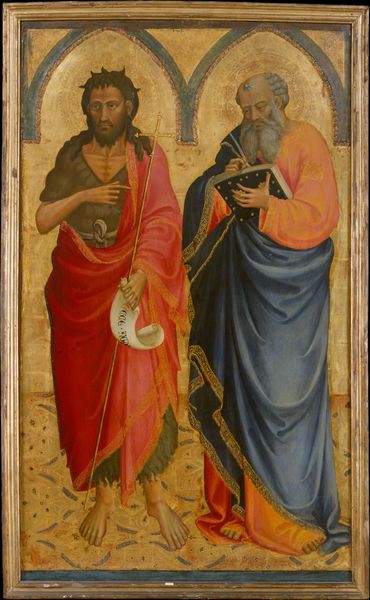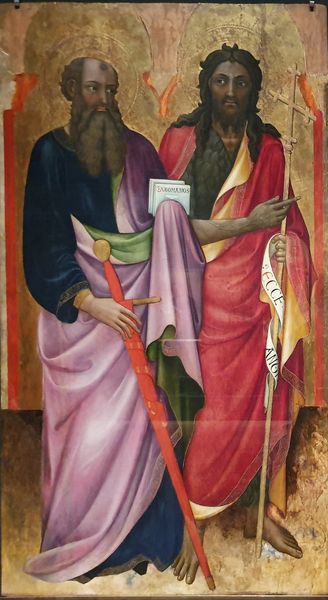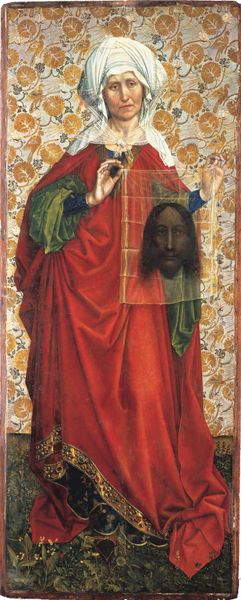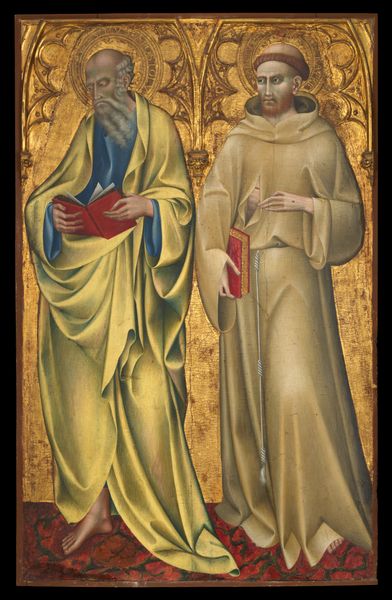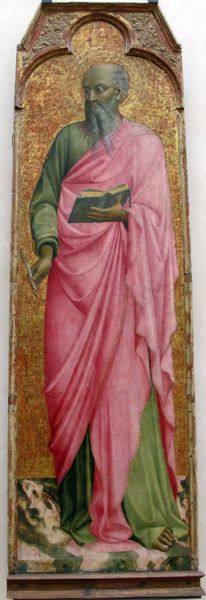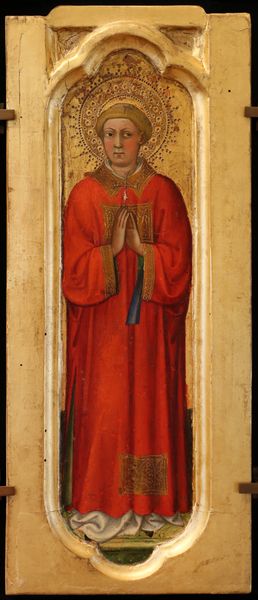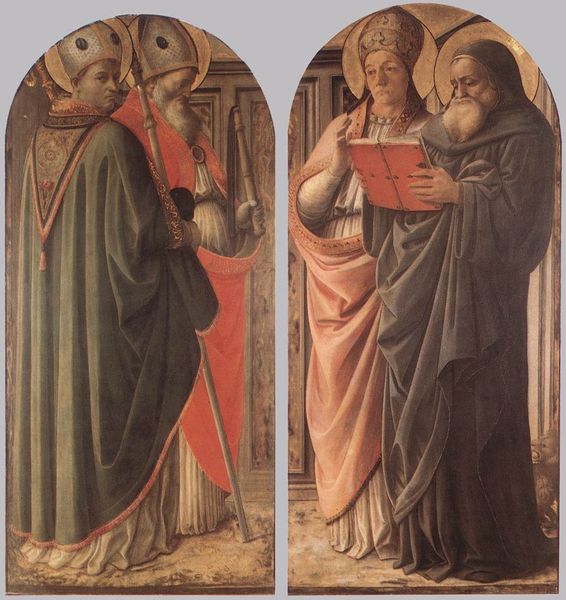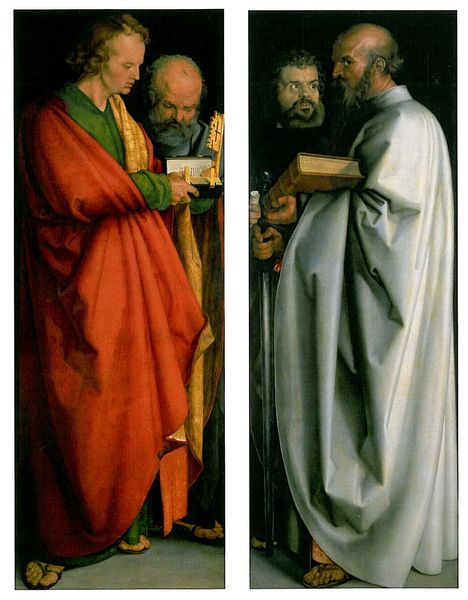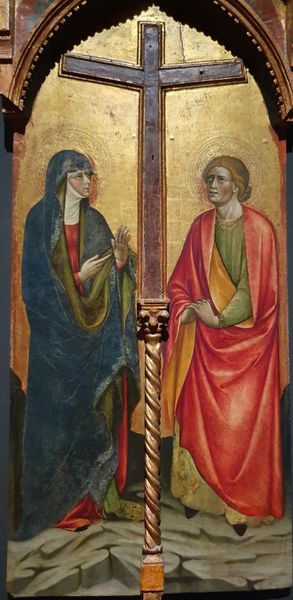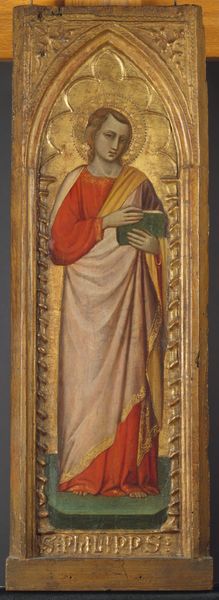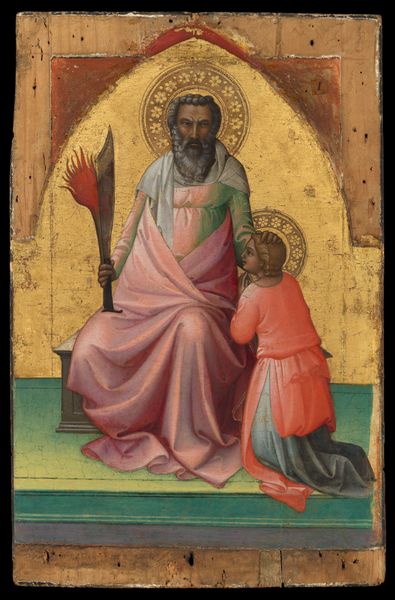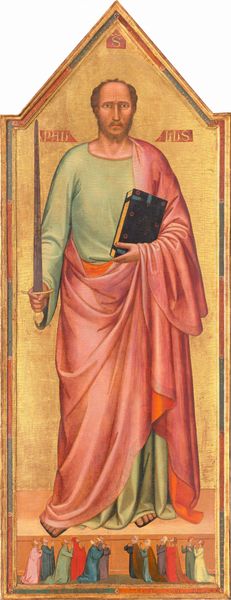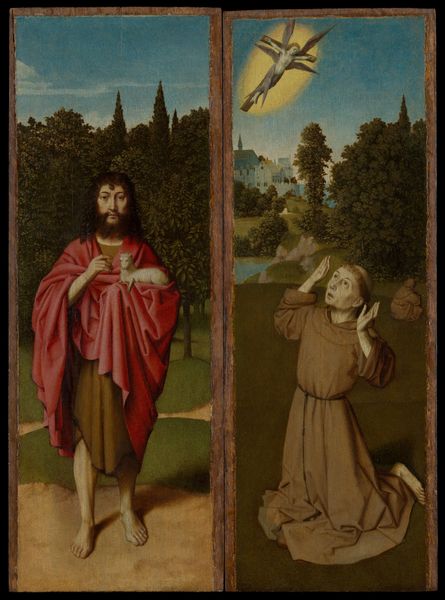
oil-paint
#
portrait
#
oil-paint
#
figuration
#
oil painting
#
animal portrait
#
christianity
#
history-painting
#
italian-renaissance
#
portrait art
Copyright: Public domain
Editor: Here we have Masaccio’s "St Jerome and St John the Baptist," painted around 1428. The oil paint on wood has such a striking contrast of color, a beautiful gold backdrop, and vivid robes. What is your interpretation of the color choices within the artwork? Curator: Focusing on the interplay of forms, observe the composition. Masaccio employed an asymmetrical arrangement, juxtaposing the monumental figure of St. Jerome with St. John. Notice how the crimson red robes juxtapose to a softer pink which gives it a visually complex yet unified whole. What effect does the application of impasto give? Editor: It is evident from that layering on each of the figures. Their clothes look more dynamic because of it! Curator: The texture does draw in the observer. Now look closely at how Masaccio delineates form. Can you discern any geometric structures, lines and planes, which construct the painting? Editor: Well, yes, now that you mention it, it seems the geometry in the piece, like the rectangular book and church figures in the hands of Jerome are a way to balance the draping folds of fabric. Even St. John's staff, bisects the whole composition with a stable, vertical stroke. Curator: Precisely! By analyzing these intrinsic elements—the spatial arrangements and geometric composition—we can deduce the fundamental aspects of the artistic execution in this masterpiece. This gives us some means by which to understand Masaccio's construction of a composition. Editor: I see! The composition isn’t only about who is there but how the objects and people contribute to form a single dynamic scene. I'll definitely pay more attention to this in the future! Curator: Indeed! The composition helps inform not only what is depicted, but how meaning and intention were built from visual relations.
Comments
No comments
Be the first to comment and join the conversation on the ultimate creative platform.
